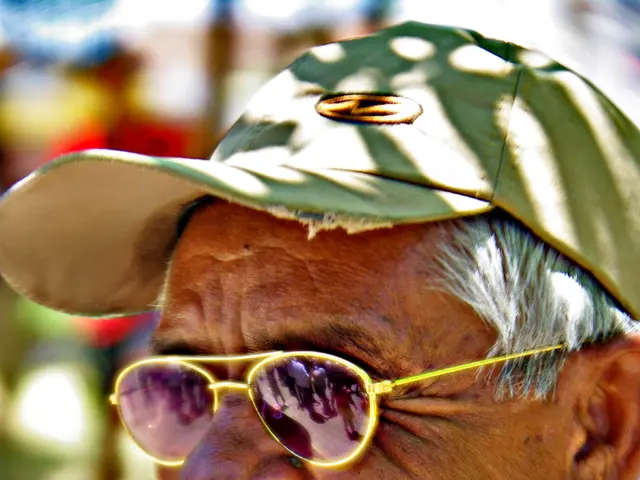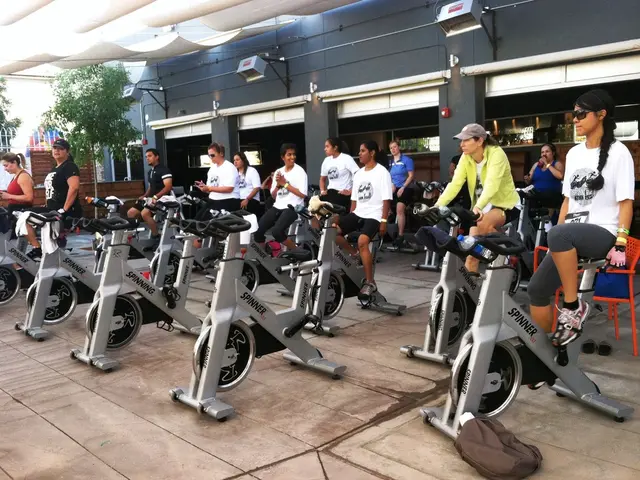Adolescent Joint Discomfort: Origins, Indicators, and Remedies
Common Causes of Anterior Knee Pain in Adolescents
Anterior knee pain is a common complaint among adolescents, with knee complaints being the fourth most common musculoskeletal-related condition affecting this age group. This article explores some of the key conditions that can cause anterior knee pain in adolescents, beyond Patellofemoral Pain Syndrome (PFPS) and Patellar Tracking Disorder.
Osgood-Schlatter Disease
One such condition is Osgood-Schlatter Disease, a common overuse injury in adolescents during growth spurts. This condition is characterised by pain and swelling just below the kneecap where the patellar tendon attaches to the tibia. The inflammation is caused by repeated stress on this growth area and often worsens with running, jumping, and climbing stairs.
Knee Sprains and Strains
Injuries to ligaments (sprains) or muscles/tendons (strains) around the knee can also cause pain, swelling, and difficulty bearing weight, frequently seen in active teens.
Meniscus Tears
Injury or degenerative tears in the cartilage that cushions the knee can cause knee pain and dysfunction, sometimes affecting adolescents involved in sports.
Patella Instability
When the kneecap moves out of its normal position, it can cause pain and a sense of the knee giving way.
Septic Arthritis
Though rare, infection of the knee joint causes severe pain, swelling, redness, and systemic symptoms like fever, requiring urgent medical treatment.
Referred Pain from Hip or Back Issues
Sometimes knee pain in adolescents may originate from problems in other joints or nerves.
Less common causes include tumors (like synovial sarcoma) and nerve entrapment; these are rare but require careful evaluation.
For each of these conditions, a thorough clinical assessment is necessary to identify the correct underlying cause.
Treatment Options
The treatment for Osgood-Schlatter disease includes rest, ice, compression, and elevation (RICE), stretching exercises, strengthening exercises, and bracing or immobilization in severe cases.
The immediate treatment of a dislocated kneecap is correcting the dislocation, applying cool packs, taking pain medications, taking nonsteroidal anti-inflammatory drugs (NSAIDs) for swelling, modifying activity, using a brace for the short term, doing physical therapy, and considering surgery if there is recurrent instability.
Treatment for Sinding-Larsen Johansson syndrome includes activity modification, stretching, and the RICE method.
The treatment for PFPS is usually conservative and includes taking medications for pain, making activity changes, maintaining a moderate weight, doing physical therapy, and using the RICE method.
In stable osteochondritis dissecans lesions, doctors prefer conservative treatments such as protected weight bearing and immobilization. If conservative treatments do not help, drilling techniques can be used to improve symptoms and healing rates.
Depending on the severity of the ACL injury, a doctor may recommend nonsurgical approaches or surgical reconstruction of the knee to restore its internal structures.
Patellar tendinitis, or jumper's knee, is a painful condition caused by small tears in the patellar or quadriceps tendon, often occurring in sports that require strenuous jumping. Treatment options for this condition include resting, cryotherapy, activity modifications, sports training, physical therapy, and considering surgery if there is a partial tendon tear.
Children and teens can avoid knee pain from injuries and overuse by wearing proper shoes and using recommended equipment for the sport and activity, doing proper warmups and cooldowns, doing regular strength training to support muscles, observing proper body mechanics, especially while performing high impact activities, managing weight and avoiding obesity, and seeking medical help if increasing or severe pain, change in color of the leg or foot, knees look deformed or out of shape, inability to move the knee, inability to walk or stand, signs of infection, such as redness, fever, swelling, and pus drainage are present.
In summary, Osgood-Schlatter disease is a key non-patellofemoral cause of anterior knee pain in adolescents, along with soft tissue injuries, meniscal problems, patella instability, and infections. A thorough clinical assessment is necessary to identify the correct underlying cause.
Read also:
- Exploring Treatment Methods for Bladder Cancer: A Comprehensive Look
- In Russia, there has been a proposal to boost the birth rate
- Wealthier Americans are expected to receive the greatest benefits from Trump's tax legislation, while lower-income citizens may see a decrease, according to the Congressional Budget Office.
- Lifting of Restriction: Water Sample Shows No Presence of Harmful Germs - Safe to Bathe Again






